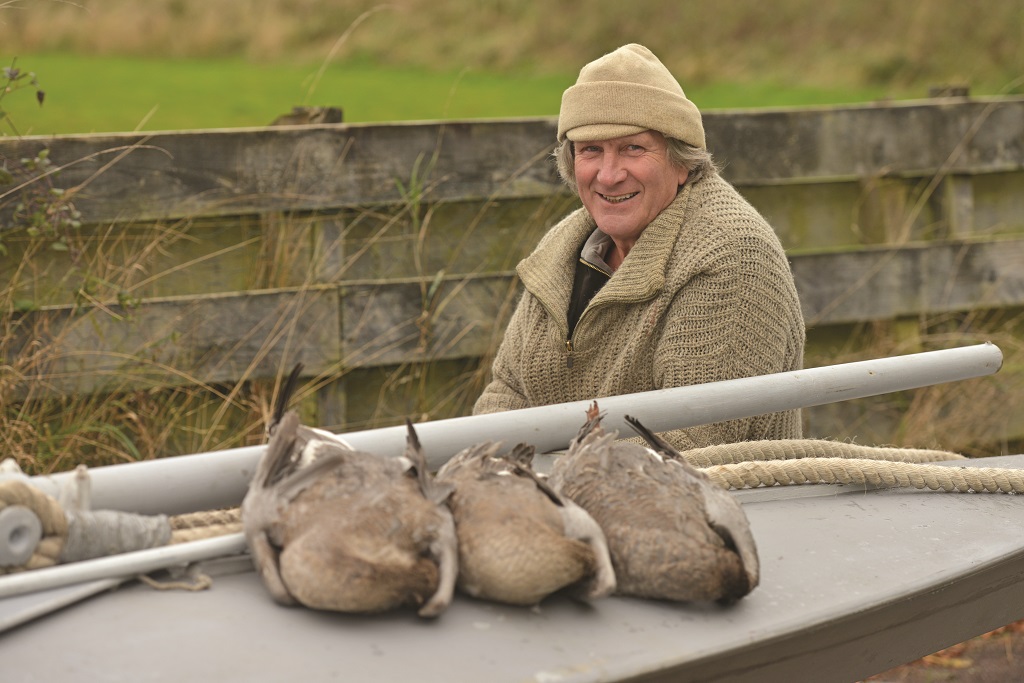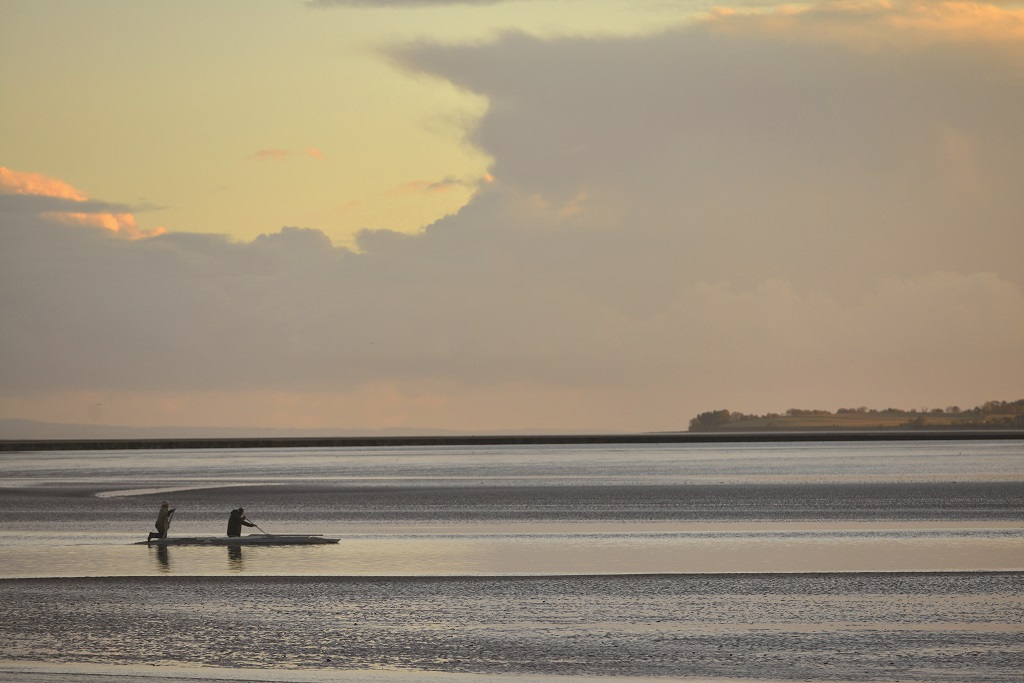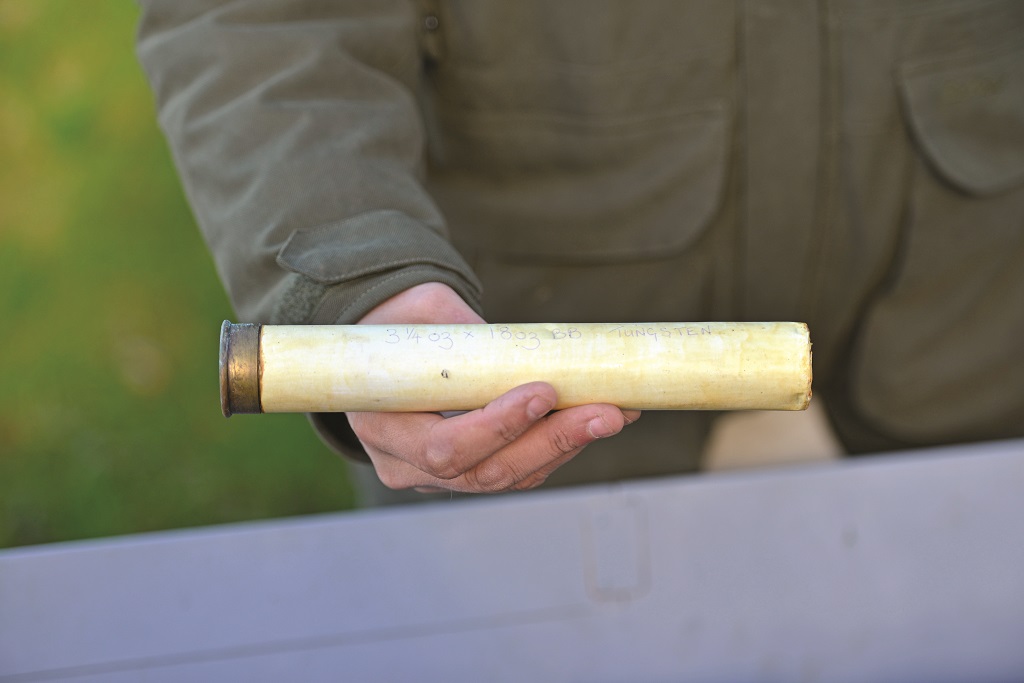
Trying his hand at the dying art of punt gunning
A dangerous and dying art, punt gunning requires stealth, patience and stamina, as our editor Richard Bath discovered on the Solway Firth.
He has hunted big game on the plains of Africa, stalked deer in every corner of God’s country, haaf-netted salmon for decades, and spent a lifetime wildfowling on Scotland’s foreshores.
But nothing gives legendary countryman Steve Cooksley greater pleasure than spending hours floating about one of the most dangerous stretches of tidal water in Europe armed with an eight-foot horizontal howitzer housed on the front of a tiny boat that barely breaks the water’s surface.
Cooksley is one of the most well-kent faces in Scottish field sports, yet punt gunning on the Solway Firth, a pursuit that he refers to as ‘stalking on sea’, remains the absurdly well-preserved and laidback 65-year-old retired oil worker’s true love. Once commonplace, the sport is now so rare that there are only a handful of punt-gunners left.

Steve Cooksley (Photo: Angus Blackburn)
This unique fieldsport has been going for over two centuries, and has its roots in the fact that the foreshore was often the property of landowners, while birds shot from a boat belonged to the shooter. The sport peaked in the 1930s, with the Depression at its height but London’s best restaurants maintaining their insatiable appetite for wildfowl.
A farm labourer’s weekly wage was around 36 shillings, roughly the same as his income for shooting 25 widgeon or 15 mallard. Professional punt gunners could scratch a living by floating out on the tide in search of mallard, widgeon and teal (geese feed inland) before fl oating back on the next tide, often without anything to show for a long day on the water.
Originally the preserve of the working man, the sport was eventually adopted by the landed classes, with Colonel Peter Hawker developing the double punt which made the sport more accessible to gentlemen shooters.
Sir Ralph Payne-Gallwey, an engineer and ballistics expert who wrote many books on shooting and who designed the first decked punt in the 1880s, codified the sport in 1893, with the dimensions of the punts and their guns later appearing in his 1907 book Shooting Moor and Marsh.
He was not the only toff obsessed with punt-gunning: stentorian Doctor In The House actor James Robertson Justice (aka Sir Lancelot Spratt), owned a Highland grouse moor where he entertained the Duke of Edinburgh, yet loved nothing more than punt-gunning on the Dornoch Firth, where he deployed ‘Irish Tom’, his 14ft long, 300lbs punt gun, which could fire 3lb of lead, unleashing the equivalent of 42 twelve-bore cartridges in a single squeeze of the trigger.

Navigating a narrow trench in the Solway Firth
As I was to find out over the course of a day with Cooksley, the heritage of this sport is of paramount important to its remaining proponents, who see themselves as the last of a dying breed. They don’t view it primarily as a means of killing birds as efficiently as possible – heaven knows there are few more difficult or time-consuming ways to fill a game bag – but as guardians of a barely flickering flame.
That much was made clear as soon as I turned up at Cooksley’s cottage on the banks of the River Nith, just north of Caerlaverock Castle and the village of Glencapel, where he launches his punts. We left later than his usual departure time, so didn’t hang around.
Half an hour after we had donned our waders we were loading our shotguns (for dispatching injured birds) into his two-man punt and fixing the huge 150lb 1.5-inch bore breech-loader onto the front of our battleship grey vessel before pushing it down the slipway and into the water.
What followed over the next ten hours was a genuine eye-opener. I’ve longed to go puntgunning for years and had always imagined stately and serene progress, floating out with the tide and quickly coming to within the required 60-80 yards before pulling the cord and unleashing the beast on the front of the boat.

Two Victorian gentlemen punt gunners
I’d been prepared for a violent recoil that was described in one punt-gunning account as ‘absolutely terrifying’, and had watched as Steve inserted a 20-inch home-made cartridge containing 3.5oz of black powder and 16oz of tungsten matrix into the gun. But mostly I’d envisaged a boat stuffed full of birds.
What I hadn’t bargained on, however, was a day full of frustrations and strength-sapping endeavour. The frustration came in the unanticipated unwillingness of Dumfries’ wildfowl to die in the cause of journalistic enquiry, although Steve admitted that he fires a shot maybe three times in his ten outings a year, most of which
take place in winter when the lochs freeze and the wildfowl head for the coast.
The endeavour came in the way in which, once we had failed to see any concentrations of birds on the shoreline
and the sun went over the yardarm, we rowed and poled three miles back along the shoreline, against the tide, seemingly moving at a pace that would make an arthritic snail blush (Caerlaverock is a bird sanctuary so we had to be off the reserve one hour after sunset, which was before the returning tide). Even raising the punt’s six foot leg ‘o mutton sail was of no help as there wasn’t as much as a wisp of wind.
Instead, as I nursed my disappointment at failing to discharge a gun only marginally less impressive than the whopper of a weapon the scantily-clad Cher memorably straddled in the If I Could Turn Back Time video, we used raw muscle to propel ourselves.

Steve Cooksley’s homemade 20 inch cartridge
Despite having a clearance of only four inches, we often found ourselves grounded on the glue-like river bed,
so stuck that no amount of paddle and pole power could free us. This is when we had to get out and push or pull the punt. Frankly, I spent most of this time terrified. As I went up to my knees in mud that resembled quicksand,
visions of poor Chinese cocklepickers in Morecambe Bay swept across my mind.
Worse still, as the unchartable sands shifted, we kept going up blind alleys, coming to at least three dead
ends. Knackered doesn’t cover how I felt, and even my disgustingly sprightly compadre was feeling more than a little weary as we got to within two hundred yards of the slipway – only to be held fast on yet another sandbank.
By now it was pitch black and distinctly chilly. More to the point we were so pooped that there was nothing for it but to sit and wait for the tide to float us off. An hour later we managed to drag ourselves back to terra firma.
Never have I been more glad to hit dry land. Punt gunners, I salute you – but at least I now appreciate why your noble sport is dying out.
Caerlaverock Castle is owned by SNH, who issue permits to go punt gunning there.
(This feature was originally published in 2014)
TAGS

